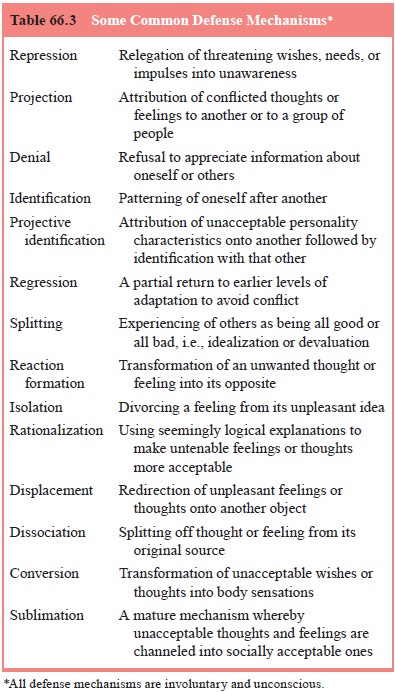Chapter: Essentials of Psychiatry: Individual Psychoanalytic Psychotherapy
Transference and Resistance, Countertransference and Counterresistance - Psychoanalytic Psychotherapy
Transference
and Resistance, Countertransference and Counterresistance
Transference and resistance constitute the two most distinctive features of psychoanalytic psychotherapies. Transference is defined as those perceptions of, and responses to, a person in the here and now that more appropriately reflect past feelings about, or responses to, important people earlier in one’s life, especially parents and siblings. Psychoanalytic psychotherapy stresses the importance of transference within the treatment relationship, but it differs from psychoanalysis in that it does not, to the same degree, promote the depth and intensity of the transference.
Countertransference is variously defined as 1) the analyst’s or psychotherapist’s transference reactions to the patient; 2) his or her reactions to the patient’s transferences; and 3) any reac-tions, feelings and attitudes of the analyst or therapist toward the patient, regardless of their source. These responses are manifes-tations of the requisite engagement by the therapist or analyst in the emotional process of treatment. Moreover, these reactions are a rich source of understanding of the patient’s experience as it touches the therapist affectively. Although countertransference feelings are at times uncomfortable for the therapist and a chal-lenge to monitor and process, they are understood as a reflection of the glue of the relationship without which no real connection or significant change can occur.
Resistance
is broadly defined as the conscious or, more of-ten, unconscious force within
the patient opposing the emergence of unconscious material. Resistance must be
understood not as something the patient does to the therapist, but rather as
the pa-tient’s attempt to protect herself or himself by avoiding the
antici-pated emotional discomfort that accompanies the emergence of
conflictual, dangerous, or painful experiences, feelings, thoughts, memories,
needs and desires. Resistance occurs through the use of unconscious mental
operations called defense mechanisms, for which there is substantial research
support (Vaillant, 1992; Horowitz et al.,
1995) (Table 66.3). The recognition, clarification and interpretation of
resistance constitute important activities of the psychoanalyst and the
psychoanalytic psychotherapist, both of whom must first appreciate how a
patient is warding off anxi-ety before understanding why he or she is so
compelled.

Counterresistance
refers to those psychological processes within the therapist that impede
therapeutic progress. These are reactions to some aspect of the treatment
experience that uncon-sciously create anxiety in the therapist. Such
occurrences become accessible first to conscious awareness and then to
self-study or self-analytical work often in the form of a mistake or a symptom
experienced in a therapy session. As an example, the therapist might forget the
patient’s appointment time or feel sleepy or bored during a therapy session.
Countertransference feelings may also be manifested in dreams or fantasies
about the patient. Analysis of such symptoms of countertransference not only
can facilitate progress in a stalled treatment but may lead to significant
growth in self-understanding by the therapist, as well as improved
under-standing of the patient.
Related Topics